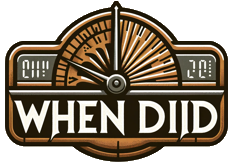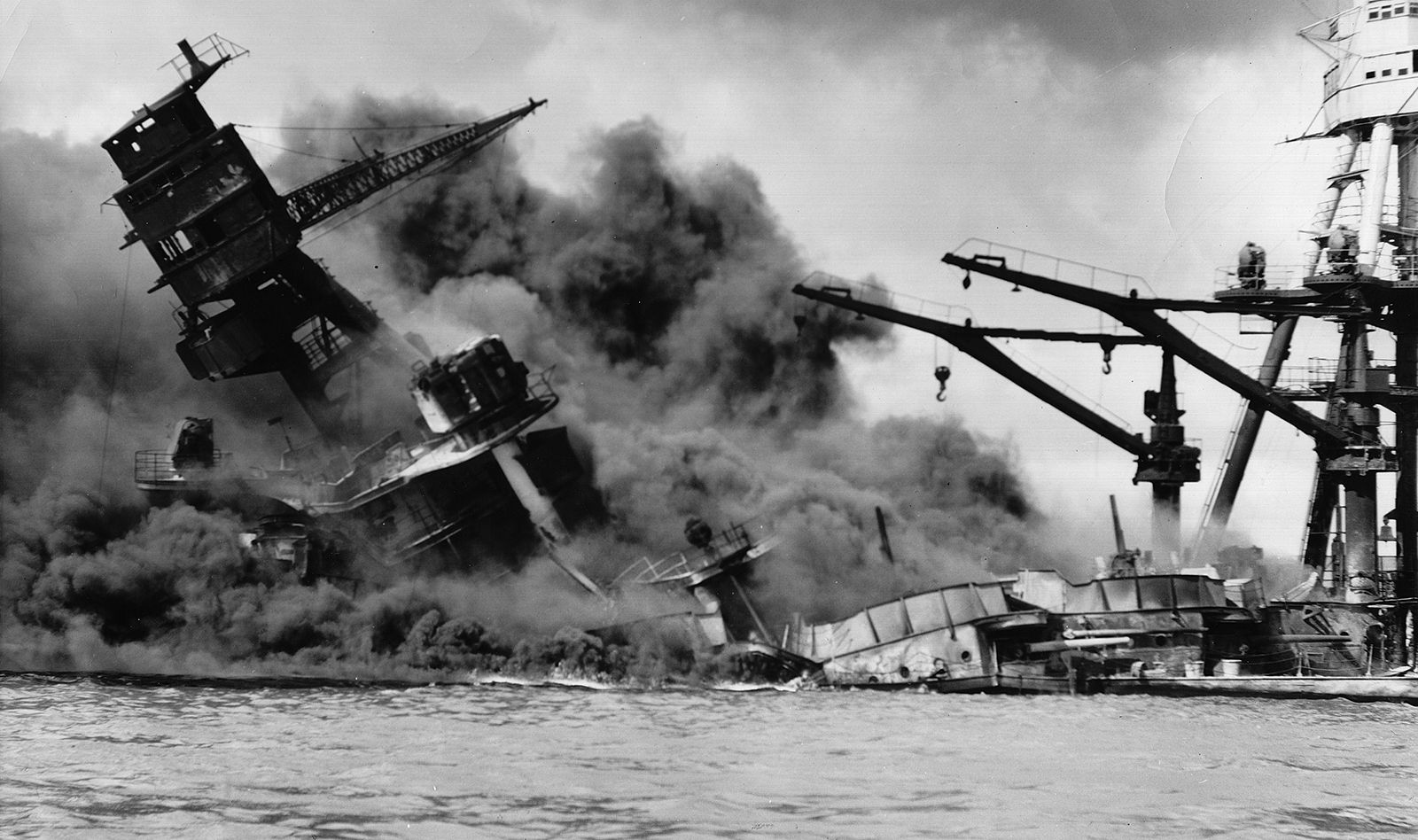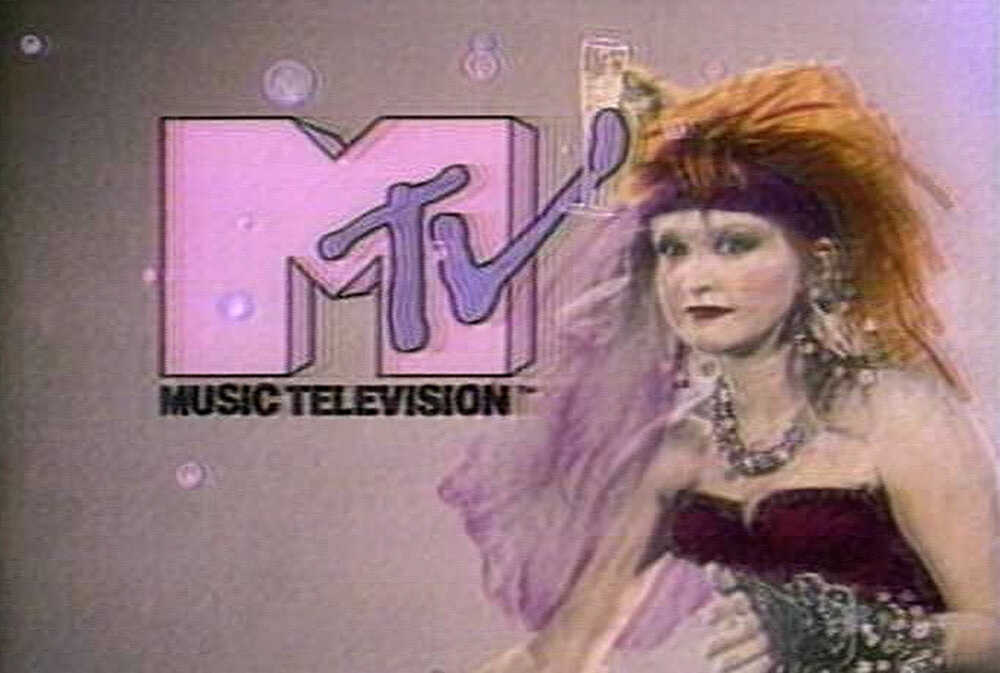On a fateful morning of December 7, 1941, the peaceful quietude surrounding the U.S. Naval Base at Pearl Harbor, Hawaii, was forever shattered. It was the day when Japan launched a devastating surprise attack that would shake the world to its core, catapulting the United States into World War II.
In the months leading up to the attack, tensions between the United States and Japan had been escalating. Japan, striving for dominance within the Asia-Pacific region, sought to expand its empire and secure crucial resources, particularly oil and rubber. However, the United States, deeply concerned by Japan’s aggressive actions, initiated an embargo on crucial supplies, posing a significant impediment to Japan’s military ambitions.
With their aspirations disrupted, Japan saw a pre-emptive strike against the United States as their only option. Early on that Sunday morning, a fleet of 353 Japanese aircraft, including fighters, bombers, and torpedo planes, soared towards Pearl Harbor. Their mission was to inflict maximum damage on the Pacific Fleet, annihilating the backbone of American naval power in the Pacific.
At approximately 7:55 a.m., the tranquility of Pearl Harbor was pierced by the thunderous roar of engines and the whistle of falling bombs. The unprepared American forces were caught off-guard as waves of Japanese aircraft swarmed overhead. Within minutes, warplanes descended upon Battleship Row, where five of the eight battleships of the Pacific Fleet were moored. Explosions tore through the harbor as bombs and torpedoes found their marks, sending mighty warships, including the USS Arizona and USS Oklahoma, to a watery grave.
As the attack unfolded, panic and confusion rippled through the base, hindering an effective response. Within just two hours, Japan had inflicted colossal damage on the American fleet, destroying or significantly damaging eight battleships, ten other ships, and over 300 planes. In addition, over 2,400 American lives were tragically lost, with thousands more injured. The Japanese, victorious in their military assault, successfully crippled America’s ability to counter Japanese aggression in the Pacific.
The attack on Pearl Harbor marked a turning point in world history. It not only brought the United States into World War II but also propelled America into a position of global leadership. President Franklin D. Roosevelt famously described the attack as “a date which will live in infamy,” as it galvanized the American public, leading to an overwhelming resolve to confront and ultimately defeat the Axis powers.
Today, the remnants of the Pearl Harbor attack stand as a powerful symbol of valor, sacrifice, and resilience. The USS Arizona Memorial, situated above the sunken battleship, serves as a somber reminder of the lives lost and the devastating consequences of that fateful day. Understanding the history and significance of the attack on Pearl Harbor allows us to honor the bravery of those involved and ensures that their sacrifice is never forgotten.
More About : When Did Japan Attack Pearl Harbor
Introduction:
In the annals of history, December 7, 1941, remains a grim reminder of Japan’s surprise attack on the Pearl Harbor Naval Base in Hawaii. This unprovoked assault by the Japanese Empire irrevocably changed the course of World War II, propelling the United States into the global conflict. This article will explore the events leading up to the attack, the specific details of the assault, and its profound impact on the United States and the world.
1. Tensions rise in the Pacific:
– Japan’s expansionist ambitions and its subsequent occupation of Manchuria in 1931.
– Escalation of hostilities due to Japan’s invasion of China in 1937.
– The United States’ response to Japanese aggression through economic policies and embargoes.
2. Planning and preparation:
– Japan’s Emperor Hirohito authorizes the plan for a surprise attack on the United States.
– The meticulous organization of the Japanese Imperial Navy, led by Admiral Isoroku Yamamoto.
– Selecting Pearl Harbor as the primary target due to its crucial role as a Pacific power projection base.
– Covert reconnaissance and the gathering of intelligence about the harbor’s defenses.
3. The attack on Pearl Harbor:
– On the fateful morning of December 7, 1941, Japanese aircraft carriers launch a fleet of planes towards Pearl Harbor.
– The assault involves two waves of over 350 Japanese aircraft, targeting battleships, cruisers, and aircraft carriers.
– The initial wave, launched at 7:48 AM, catches the American forces off-guard, inflicting severe damage.
– A second wave follows shortly after, intensifying the destruction.
4. Devastating consequences:
– The attack leads to the sinking of four American battleships, with others severely damaged.
– Over 2,400 Americans lose their lives, with thousands more injured.
– Multiple aircraft are destroyed, leaving the US Pacific Fleet significantly weakened.
– The attack destroys the illusion of invincibility and isolationism within the United States, propelling the nation into World War II.
5. International reactions:
– The attack shocks the world and garners condemnation from countries worldwide.
– The United States declares war against Japan, shifting its focus from neutrality to active involvement in the war.
– Allied nations unite against the Axis powers, seeking retribution for this act of aggression.
6. Legacy and remembrance:
– Pearl Harbor becomes a symbol of resilience and sacrifice within American history.
– The attack leads to significant changes in US military strategy and security measures.
– Memorials, such as the USS Arizona Memorial, are constructed to honor those who lost their lives.
– The annual commemoration on December 7th ensures the events of that day are never forgotten.
Conclusion:
The attack on Pearl Harbor will forever be etched in history as a defining moment that propelled the United States into World War II. Japan’s surprise aerial assault on the Pearl Harbor Naval Base came with devastating consequences, resulting in significant loss of life and tremendous material damage. However, the attack galvanized a previously uncertain nation, uniting its people and ultimately leading to allied victory. By remembering the events of that day, we honor the lives lost and ensure that the lessons learned from Pearl Harbor guide us towards a more peaceful future.
FAQs on When Did Japan Attack Pearl Harbor
Q: When did Japan attack Pearl Harbor?
A: Japan attacked Pearl Harbor on December 7, 1941.
Q: Why did Japan attack Pearl Harbor?
A: Japan attacked Pearl Harbor as part of their military strategy to disable the United States Pacific Fleet and gain control over Southeast Asia.
Q: How many aircraft were involved in the attack on Pearl Harbor?
A: Japan launched the attack with a total of 353 aircraft, including bombers, torpedo planes, and fighter planes.
Q: Were there any warnings before the attack on Pearl Harbor?
A: Yes, there were some warnings of a potential attack, but they were not specific about the target or the timing.
Q: How long did the attack on Pearl Harbor last?
A: The initial attack lasted approximately two hours, from 7:55 a.m. to 9:45 a.m.
Q: How many casualties were there during the attack on Pearl Harbor?
A: The attack resulted in the deaths of 2,403 Americans, including both military personnel and civilians.
Q: Did Japan succeed in their objectives at Pearl Harbor?
A: While Japan achieved some initial success, such as sinking or damaging several U.S. battleships and destroying numerous aircraft, they did not cripple the Pacific Fleet in its entirety.
Q: Was the attack on Pearl Harbor a surprise to the United States?
A: Yes, the attack on Pearl Harbor was a surprise to the United States. The element of surprise was a crucial factor enabling Japan to carry out the attack successfully.
Q: How did the attack on Pearl Harbor impact the United States’ involvement in World War II?
A: The attack on Pearl Harbor propelled the United States into World War II. It led to the declaration of war against Japan by the U.S., and subsequently, the entry into the war against Germany and Italy as well.
Q: Is the attack on Pearl Harbor remembered and commemorated?
A: Yes, the attack on Pearl Harbor is remembered and commemorated as a significant event in American history. The date, December 7th, is recognized as National Pearl Harbor Remembrance Day in the United States.




